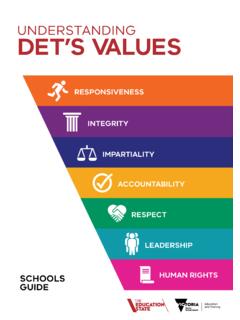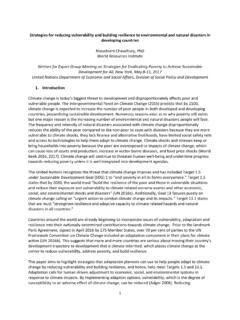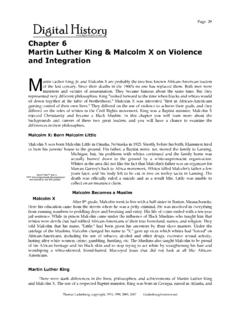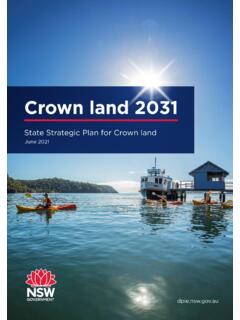Transcription of THE ARTEMIS ACCORDS - NASA
1 THE ARTEMIS ACCORDS . PRINCIPLES FOR COOPERATION IN THE CIVIL EXPLORATION AND. USE OF THE MOON, MARS, COMETS, AND ASTEROIDS. FOR PEACEFUL PURPOSES. TABLE OF CONTENTS. Page Number SECTION 1 - PURPOSE AND SCOPE ..2. SECTION 2 IMPLEMENTATION ..2. SECTION 3 PEACEFUL PURPOSES . 3. SECTION 4 TRANSPARENCY .. 3. SECTION 5 INTEROPERABILITY ..3. SECTION 6 EMERGENCY ASSISTANCE ..3. SECTION 7 REGISTRATION OF SPACE OBJECTS ..3. SECTION 8 RELEASE OF SCIENTIFIC DATA ..4. SECTION 9 PRESERVING OUTER SPACE HERITAGE ..4. SECTION 10 SPACE RESOURCES ..4. SECTION 11 DECONFLICTION OF SPACE ACTIVITIES .. 5. SECTION 12 ORBITAL DEBRIS .. 6. SECTION 13 FINAL PROVISIONS .. 7. i The Signatories to these ACCORDS .
2 RECOGNIZING their mutual interest in the exploration and use of outer space for peaceful purposes, and UNDERSCORING the continuing importance of existing bilateral space cooperation agreements;. NOTING the benefit for all humankind to be gained from cooperating in the peaceful use of outer space;. USHERING in a new era of exploration, more than 50 years after the historic Apollo 11 Moon landing and more than 20 years after the establishment of a continuous human presence aboard the International Space Station;. SHARING a common spirit and the ambition that the next steps of humanity's journey in space inspire current and future generations to explore the Moon, Mars, and beyond.
3 BUILDING upon the legacy of the Apollo program, which benefited all of humankind, the ARTEMIS program will land the first woman and next man on the surface of the Moon and establish, together with international and commercial partners, the sustainable human exploration of the solar system;. CONSIDERING the necessity of greater coordination and cooperation between and among established and emerging actors in space;. RECOGNIZING the global benefits of space exploration and commerce;. ACKNOWLEDGING a collective interest in preserving outer space heritage;. AFFIRMING the importance of compliance with the Treaty on Principles Governing the Activities of States in the Exploration and Use of Outer Space, Including the Moon and Other Celestial Bodies, opened for signature on January 27, 1967 ( Outer Space Treaty ) as well as the Agreement on the Rescue of Astronauts, the Return of Astronauts and the Return of Objects Launched into Outer Space, opened for signature on April 22, 1968 ( Rescue and Return Agreement ), the Convention on International Liability for Damage Caused by Space Objects, opened for signature on March 29, 1972 ( Liability Convention )
4 , and the Convention on Registration of Objects Launched into Outer Space, opened for signature on January 14, 1975. ( Registration Convention ); as well as the benefits of coordination via multilateral forums, such as the United Nations Committee on the Peaceful Uses of Outer Space ( COPUOS ), to further efforts toward a global consensus on critical issues regarding space exploration and use; and DESIRING to implement the provisions of the Outer Space Treaty and other relevant international instruments and thereby establish a political understanding regarding mutually beneficial practices for the future exploration and use of outer space, with a focus on activities conducted in support of the ARTEMIS Program.
5 COMMIT to the following principles: 1. SECTION 1 - PURPOSE AND SCOPE. The purpose of these ACCORDS is to establish a common vision via a practical set of principles, guidelines, and best practices to enhance the governance of the civil exploration and use of outer space with the intention of advancing the ARTEMIS Program. Adherence to a practical set of principles, guidelines, and best practices in carrying out activities in outer space is intended to increase the safety of operations, reduce uncertainty, and promote the sustainable and beneficial use of space for all humankind. The ACCORDS represent a political commitment to the principles described herein, many of which provide for operational implementation of important obligations contained in the Outer Space Treaty and other instruments.
6 The principles set out in these ACCORDS are intended to apply to civil space activities conducted by the civil space agencies of each Signatory. These activities may take place on the Moon, Mars, comets, and asteroids, including their surfaces and subsurfaces, as well as in orbit of the Moon or Mars, in the Lagrangian points for the Earth-Moon system, and in transit between these celestial bodies and locations. The Signatories intend to implement the principles set out in these ACCORDS through their own activities by taking, as appropriate, measures such as mission planning and contractual mechanisms with entities acting on their behalf. SECTION 2 - IMPLEMENTATION. 1. Cooperative activities regarding the exploration and use of outer space may be implemented through appropriate instruments, such as Memoranda of Understanding, Implementing Arrangements under existing Government-to-Government Agreements, Agency-to-Agency arrangements, or other instruments.
7 These instruments should reference these ACCORDS and include appropriate provisions for implementing the principles contained in these ACCORDS . (a) In the instruments described in this Section, the Signatories or their subordinate agencies should describe the nature, scope, and objectives of the civil cooperative activity;. (b) The Signatories' bilateral instruments referred to above are expected to contain other provisions necessary to conduct such cooperation, including those related to liability, intellectual property, and the transfer of goods and technical data;. (c) All cooperative activities should be carried out in accordance with the legal obligations applicable to each Signatory; and (d) Each Signatory commits to taking appropriate steps to ensure that entities acting on its behalf comply with the principles of these ACCORDS .
8 2. SECTION 3 PEACEFUL PURPOSES. The Signatories affirm that cooperative activities under these ACCORDS should be exclusively for peaceful purposes and in accordance with relevant international law. SECTION 4 TRANSPARENCY. The Signatories are committed to transparency in the broad dissemination of information regarding their national space policies and space exploration plans in accordance with their national rules and regulations. The Signatories plan to share scientific information resulting from their activities pursuant to these ACCORDS with the public and the international scientific community on a good-faith basis, and consistent with Article XI of the Outer Space Treaty.
9 SECTION 5 INTEROPERABILITY. The Signatories recognize that the development of interoperable and common exploration infrastructure and standards, including but not limited to fuel storage and delivery systems, landing structures, communications systems, and power systems, will enhance space-based exploration, scientific discovery, and commercial utilization. The Signatories commit to use reasonable efforts to utilize current interoperability standards for space-based infrastructure, to establish such standards when current standards do not exist or are inadequate, and to follow such standards. SECTION 6 EMERGENCY ASSISTANCE. The Signatories commit to taking all reasonable efforts to render necessary assistance to personnel in outer space who are in distress, and acknowledge their obligations under the Rescue and Return Agreement.
10 SECTION 7 REGISTRATION OF SPACE OBJECTS. For cooperative activities under these ACCORDS , the Signatories commit to determine which of them should register any relevant space object in accordance with the Registration Convention. For activities involving a non-Party to the Registration Convention, the Signatories intend to cooperate to consult with that non-Party to determine the appropriate means of registration. 3. SECTION 8 RELEASE OF SCIENTIFIC DATA. 1. The Signatories retain the right to communicate and release information to the public regarding their own activities. The Signatories intend to coordinate with each other in advance regarding the public release of information that relates to the other Signatories'.


















